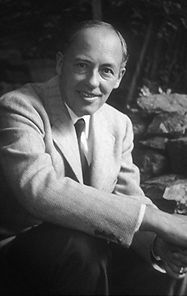
9th - 17th Century : Ceramic glazes distinguished by their glowing and speckeled luster have been utilized in the Islamic world; they contain metalllic nanoparticles.
Pre-19th Century
Although many perceive nanotechnology to have emerged only recently, it is a false belief. Nanotechnology is as ancient as Rome itself - with known accounts dating back to the fourth century.
4th Century : Lycurgus Cup of Rome contains dichoroic glass - a glass with multi-colored and reflective properties. The Lycurgus Cup changes colors between green and red at different angles of lighting: when illuminated from within, the cup appears red; when illuminated from outside, the cup appears green. Magnesium, titanium, and other metallic particles allow the dichroic glass to appear to display several colors - all at the same time! At the nanoscale, the metallic particles display properties different from their macroscopic couterparts, thus causing the chameleon effect.
VIDEO 3
1908 : Germany's Gustav Mie proposes a theory of light scattering through particles. His theory demonstrated that short wavelengths of light scatter from particles more effectively than long wavelength light waves. In addition, Mie's theory argued that the size of particles determines the color of the light observed; Mie continued research and developed a way to calculate the size of particles by observing the light they reflect. Thus, nanoscale size succumbed to mathematics and became more predictable and calculable.

1857 : Michael Faraday discovered colloidal "ruby" gold - nanostructured gold which produces various colors in solutions under cerain lighting. Colloids are minute particles that suspend in a solution and thus create optical effects.
Faraday published his findings in the paper entitled "Experimental Relations of Gold (and Other Metals) to Light" published in Philosophiical Transactions. The focus of Faraday's research was to "examine the interaction of light with metal particles, but much of this paper focused on various aspects of the formation, nature and properties of ruby gold." His experiments revolved around various practical approaches, such as treatingan aqueous solution of a gold component (NaAuCl4) with phosphorus in caarbon disulfide, which reduced the solution in a two phase system: the yellow color of gold transformed to a deep ruby color in several minutes.
To learn more about Faraday's experiment and see the entire spectrum of data click ~HERE~.



"RUBY" GOLD - IMAGE 49
 HISTORY |
|---|
1931 : German scientists Max Knott and Ernst Ruska invent the Electron Microscope. This microscope introduced a new technique - accelerating electrons in a vacuum to produce extremely short wavelengths - 10000 times shorter than those of the visible light used in previous microscope models that utilized the shortest wavelenghts of visible light. Once the desirable wavelength is achieved, the electrons are focused on a part of a sample: some electrons are scattered while others are absorbed by the specimen, creating an image representation of the sample viewed in extraordinary detail and clarity. The development of the Electron Microscope paved the path for further invention of techniques and instruments, which eventually allowed scientists to conduct research at the nanoscale level.
1936 : Invention of the Field Emission Microscope for the first time allowed for "near-atomic-resolution" images; inventor: Erwin Muller of the Siemens Research Labaratory, Berlin.

FIELD EMISSION MICROSCOPE IMAGE- IMAGE 53
1951 : Erwin Muller invents the Field Ion Microscope in the Kaiser-Wilhelm Institute of Berlin. The Field Ion Mictoscope enabled scientists to observe atomic arrangement of atoms.
1959 : At the American Physical Society Meeting in Pasadena, California, Richard P. Feyman predicted the possible extend and potential of nanotechnology. In his speech Feyman stated,
"What I want to talk about is the problem of manipulating and controlling things on a small scale. As soon as I mention this, people tell me about miniaturization, and how far it has progressed today. They tell me about electric motos that are the size of the nail on your small finger. [...] But that's nothing; that's the most promitive, halting step in the direction I intend to discuss. It is a staggeringly small world that is below" (Feyman, R.P., December 29, 1959).
1965 : Gordon Moore establishes a new trend - "Moore's Law". "Moore's Law" presents the notion that chip sizes and their costs are expected to shrink with time and innovation.

IMAGE 54
NANOCRYSTALLINE.EKIMOV
1990's : New nanotechnology companies begin to arise: Nanophase Technologies (1989), Helix Energy Solutions Group (1990), Zyvex (1997), Nano-Tex (1998).
1990's : Late Nobel physicist Richard P. Feynman, participant of the Manhattan Project during World War II and CalTech professor proposed to use machine tools to create more minute machine tools on the atomic level so as to develop precise microscopic instruments and tools for curing a human at a molecular level - the foreshadowing of nanomedicine. (4)
1999 : IWGN publish Nanotechnology Reseach Directions: Vision for the Next Decade, a study that directly led to the establishment of the U.S. National Nanotechnology Initiative and provided a plan for the further conduction of nanoscale sciences.

1999 : Chad Mirkin of Northwestern University invented the dip-pen nanolithography (DPN), based on the age-old concept of a classic quill pen, allowing for "writing" of electonic circuits, nanoencryption, and marking of niomaterials used in biological cell studies.
2000 : President Clinton officially establishes the National Nanotechnology Initiative (NNI) in order to stimulate and further bolster U.S. advances in nanotechnology to meet the competitiveness in the field. The new division is funded by Congress "for the first time in FY2001."

You can learn more information regarding Stanford's Carbon Nanotube Computer here!
IMAGE 2
15th Century : The stained glass windows of magnificent European cathedrals owe their vibrancy and richness to metal nanoparticles, embedded within the material.
17th Century : Durable, resilient, sharp Damascus saber blades owe their ultimate formula to hidden carbon nanotues and cementite nanowires - ultrahigh carbon steel that earned the blades their fame.
20th Century
19th Century
In the modern era, nanotechnology has slowly but began to gain momentum starting from the 19th century and continued to branch out into various other sectors of the science world - including nanomedicine.
GUSTAV MIE - IMAGE 50

MAX KNOTT - IMAGE 51
GUSTAV MIE - IMAGE 50

ERNST RUSKA - IMAGE 52
1974 : Professsor Norio Taniguchi of Tokyo Science University coins the term nanotechnology, illustrating the atomic-scale dimension under which this new science functions.
1981 : IBM's Zurich Lab's Gerd Binnih and Heinrich Rohrer father the Scanning Tunneling Microscope. The Scanning Tunneling Microscope permits scientits, for the first time, to draw direct spatial images of individual atoms. Voltage is directed between the probe of STM and the surface of the sample; as the electrical current flows, STM determines the path and distance of traveling electrons to map out the surface of the specimen observed, thus "seeing" atomic-sized objects.
1981 : Nanocrystalline is discrovered by Alexei Ekimov, Russia. Nanocrystalline material is only a few nanomenters in size and is composed of polyscrystalline. Ekimov further conducted several studies of the crystallite's optical and electronic properties.
1985 : Louis Brus discovered colloidal semiconductor nanocrystals, commonly known as quantun dots, in a chapter of Bell Labs.
1986 : The Atomic Force Microscope is inventd by Gerd Binnig, Calcin Quate, and Christoph Gerber. The Atomic Force Microscope allows scientists to measure, observe, and manipulate objects of a fraction of a nanomener in size! Atomic force microscopy builds on the cantilever: as it travels the atomic forces exert a pull and are measured to recreate an "atom-by-atom topographical map."
1988 : Dr.Louis Brus and his research team continue their work on quantum dots - "nano-sized crystal semiconductor materials made from the same substance" yet exhibit varying colors. According to the Quantum Confinement Effect, there is a direct relationship between the color and the size of the nanocrystals. Electrons inside qunatum dots move between the energy levels within and the size of the quantum dot determines the allowed electron energies, and therefore the color produced, within the nanocrystals. In the field of nanomedicine, quantum dots were applied to help improve diagnosis, since they provided more efficient biological markers.
1991 : CNT - Carbon Nanotubes - are discovered by Sumio Iijima of NEC in Japan. CNT are tubes entirely composed of carbon material, demostrating supernatural strenght and thermal and electrical conductivity. Several tubes are nested within each other, providing strength and remarkable electrical properties for practical applications in the field of nanotechnology.
1992 : Mobil Oil's team headed by C.T. Kresge observe nanostructured catalytic materials MCM-41 and MCM-48, which are currently utilized in drug delivery. They release drug at particular points in the body for ultimate and accurate drug distribution.
1993 : The extend of the application of nanotechnology broadened with MIT's Moungi Bawendi's invention of a method for controlling synthesis of nanocrystals (qunatum dots).
2000 : The U.S. National Nanotechnology Initiative (NNI) is officially formed.

21th Century
2000 : Mark Hersam of Northwestern University and Joseph Lyding of the University of Illinios at Urbana-Champaign develop the Feedback-Controlled Lithography (FCL) technique. For the first time, scientists were permitted to precisely build structures at nanoscale with the Scanning Tunneling Microscope (STM), allowing them to conduct chemical studies at a single molecule level. FCL also opened doors for the application of nanotechnology in the constuction of nanosized prototype electronic devices.
FCL is performed by first coating a silicon sample with hydrogen, producing a "hydrogen passivated silicon." Using the Scanning Tunneling Microscope (STM), scientists are able to conjure an image of the surface of the sample. With the application of an electrical voltage to the tip of the STM, the electic energy breaks the bonds between the hydrogens and the silicon sample. Since the STM tip is under perfect contol, the hydrogen bonds are thus "removed with atomic precision."
2003 : Renata Pasqualin, Rebekah Drezek, Jennifer West, and Naomi Halas develop another major breakthrough in nanomedicine - the gold nanoshells. Gold nanoshells serve as a "platform for the integrated discovery, diagnosis, and treatment of breast cancer," without the abhorring effects of deteriorating chemotherapy or radiation and eliminating the need for surgery or biopsis during diagnosis and therapeutics. The gold nanoshells consist of a silica core and and over layer of gold, and due to the metal outing may be "tuned" in size to consume near-infrared light.
2004 : Europe officially joins the race for nanotechnology as the European Commission adopts Communication 338 - "Towards a European Strategy for Nanotechnology," which advocated for the institutionalization of European efforts at nanscience and nanotechnology within a uniform strategy, spurring the ongoing European funding and action plans for nanotechnology.
Ethical and social issues concerning nanotechnology arise for the first time to a federal level within Britain and Britain's Royal Society and the Royal Academy of Engineering publish "Nanoscience and Nanotechnologies: Opportunities and Uncertainties" which urges to address "potential health, environmental, social, ethical, and regulatory issues associated with nanotechnology."
2004 : SUNY Albany institute the College of Nanoscale Science and Engineering in the United States - the first college-level educational curriculum oriented on nanotechnology.
2005 : Representatives of the Califronia Institute of Technology Erin Winfree and Paul Themund engrained computations into the process of the growth of nanocrystals throught cultivatoin of theories on DNA-based computation and "algorithmic self-assembly."
2007 : Professors of the Massachusetts Institute of Technology Angela Belcher, Paula Hammond, and Yet-Ming Chiang constructed a "lithium-ion battery with a common type of harmless to humans virus" using economical and environmetally-friendly techniques.
2009-2010 : Under Nadrian Seeman, his team at New York University constructed several robotic DNA-like nanoscale assembly devices that allowed precise assembly of more complex and smaller parts.
2010 : IBM created a complete nanoscale "3D relief map of the world" in fascinating time - only 2 minutes and 23 seconds! Using a nanoscale silicon chip as the tool demonstrated the power of the nanotechnological patterning methodology for generating nanoscale patters and stuctures as minute as 15 nanometers in size, and at a reduced cost; opening doors for innovation in the field of nanomedicine.
WATCH THE VIDEO TO LEARN MORE >
2011 : Scientists begin to introduce nanotechnology into the concept of tissue engineering. Cells labeled with magnetic nanoparticles are marked and enabled for manipulation through magnetic force, introducing nanomedicine into the field of "magnetic force-based tissue engineering (Mag-TE)." (26).
2012 : NNI introduced two new Nanotechnology Signature Initiatives (NSIs) - the Nanotechnology Knowledge Infrastructure (NKI) and Nanosensons.
2013 : Stanford researchers design and engineer the first carbon nanotube computer, permitting scientists to create the necessary components through a faster, easier process.
Read about the latest news in the field of Nanomedicine in the "Current Events" section of the website. Click the button below!